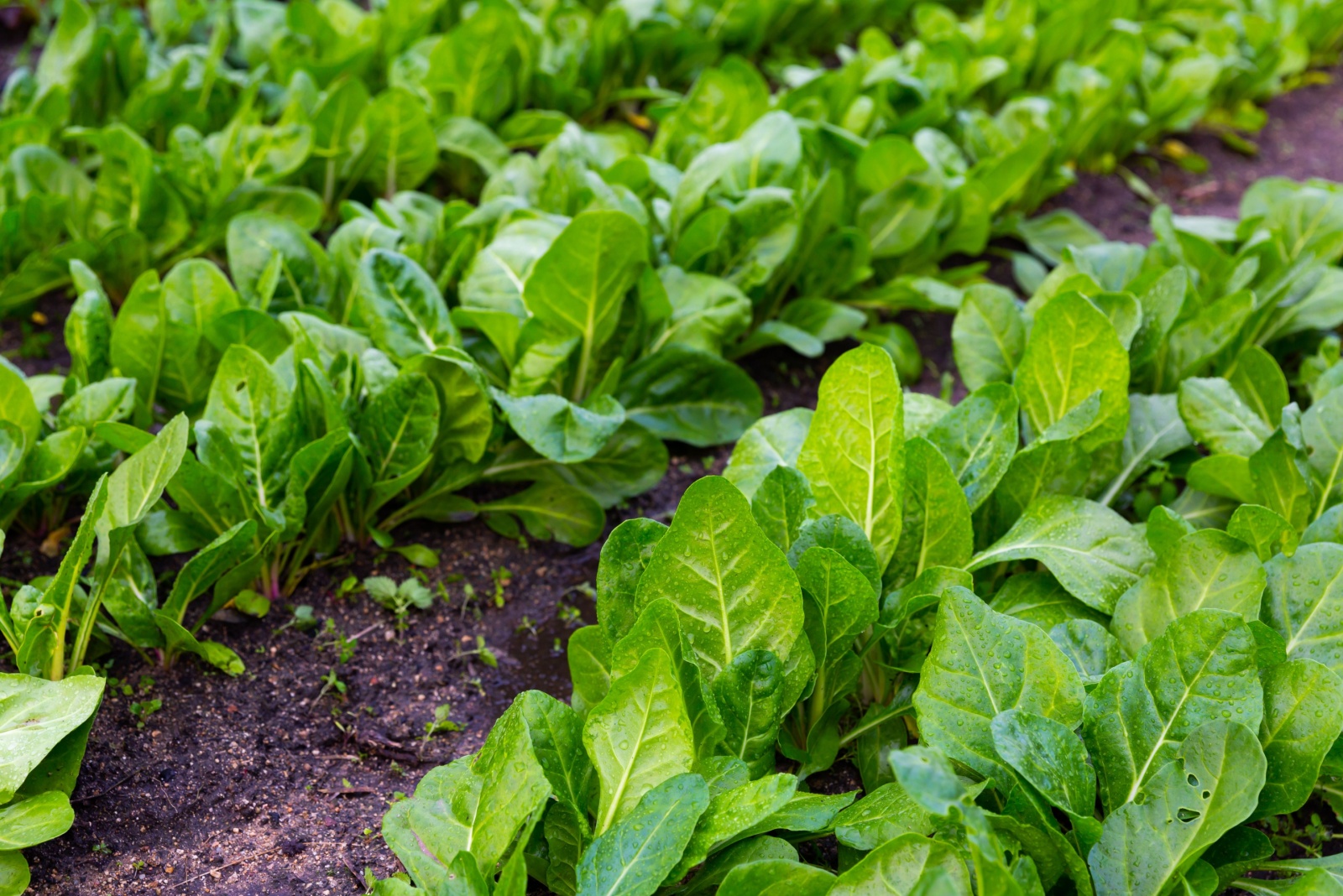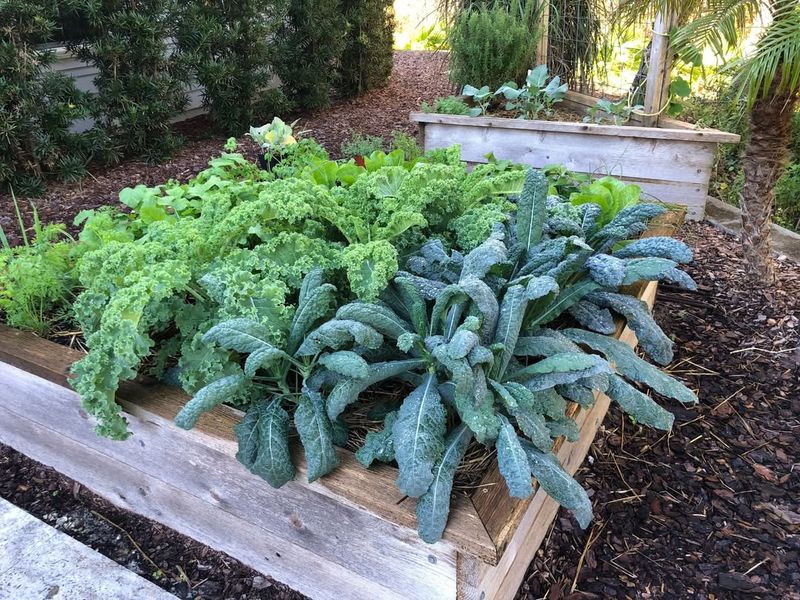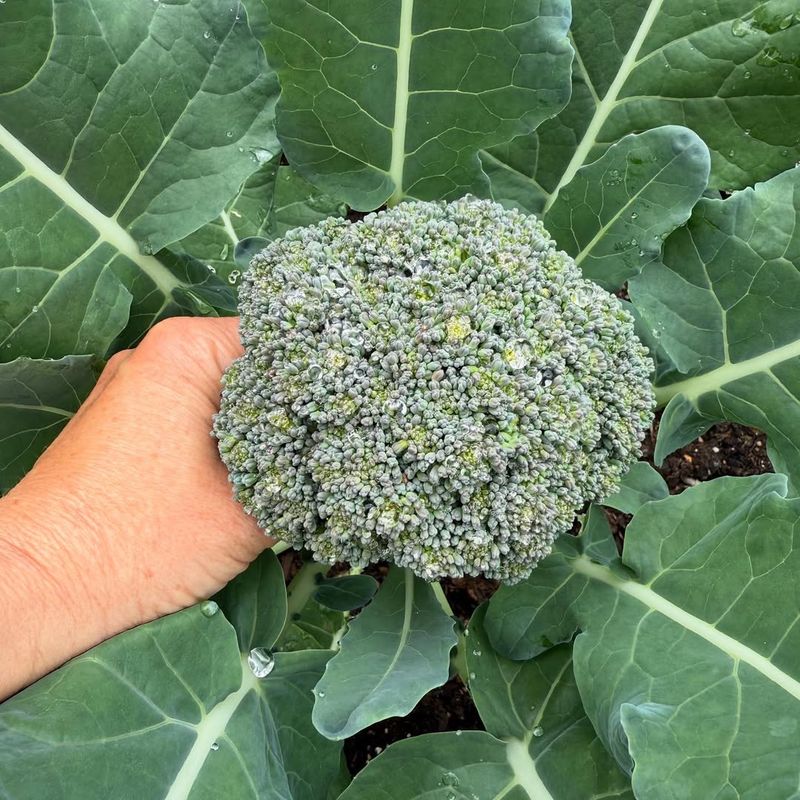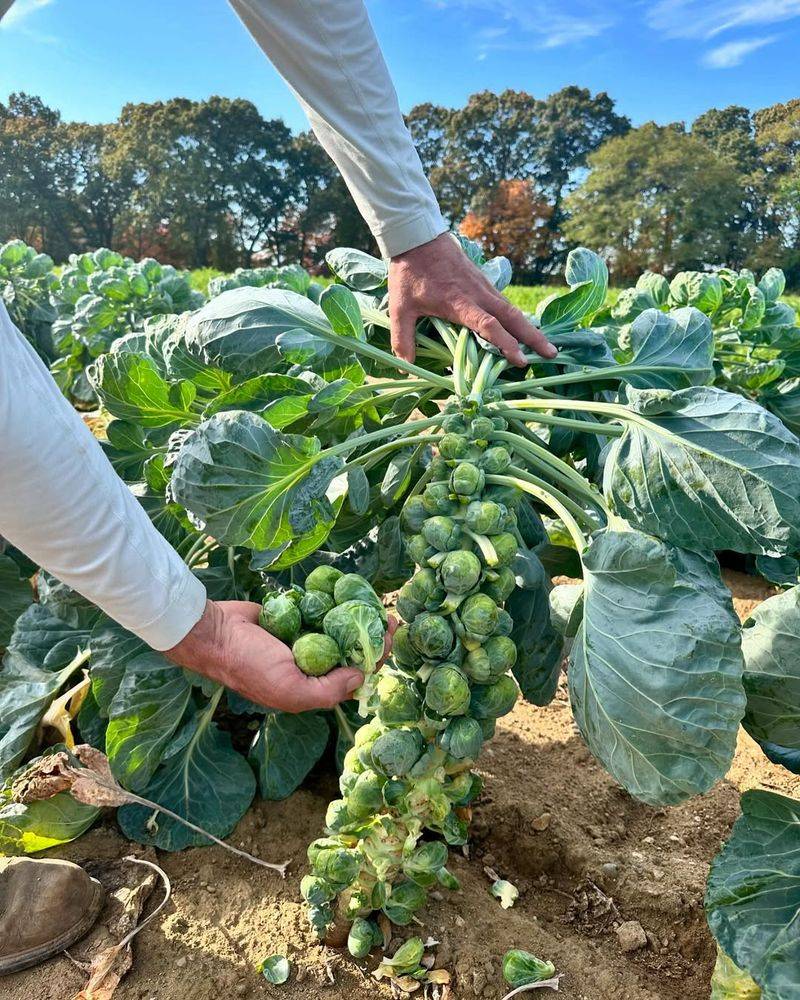Winter vegetables may be built for chilly weather, but a sudden freeze can still catch Portland gardeners flat-footed. When temperatures plunge overnight, tender leaves can scorch, stems can split, and entire crops can collapse before the sun comes up.
Local experts are sounding the alarm because a little preparation now can mean the difference between a thriving winter harvest and a bed full of casualties. With a sharp cold snap always lurking this time of year, it pays to stay one step ahead.
1. Kale Gets Mushy And Loses Crunch
Kale normally handles cold weather like a champion, but sudden temperature drops below 20 degrees Fahrenheit can turn those crisp leaves into a slimy mess. Cell walls inside the leaves burst when ice crystals form too quickly, destroying that satisfying crunch you expect from fresh kale.
Cover your kale plants with row covers or old bedsheets when forecasts predict hard freezes. Morning harvests work best because leaves recover some texture as they warm up. Garden centers in Portland sell floating row covers that trap heat while letting sunlight through for daytime protection.
2. Broccoli Heads Split Open Unexpectedly
Broccoli crowns contain lots of moisture, which expands rapidly during flash freezes and causes the tight florets to crack apart. Once splitting occurs, the heads become entry points for rot and disease that spread quickly through your entire plant.
Mulch heavily around broccoli stems to insulate roots from temperature swings. Check plants daily during cold warnings and harvest any heads showing early bud development. Smaller broccoli crowns actually taste sweeter and handle cold stress better than oversized ones waiting to mature.
3. Spinach Turns To Watery Mush
Spinach leaves are incredibly thin and delicate, making them vulnerable when temperatures plummet without warning. Ice formation ruptures the tender leaf tissue almost immediately, leaving you with dark, collapsed greens that smell terrible as they decompose.
Plant spinach under taller crops like Brussels sprouts to create natural windbreaks and temperature buffers. Cold frames or hoop tunnels provide excellent protection while extending your harvest season by several weeks. Always water spinach beds the day before predicted freezes because moist soil holds heat better than dry ground.
4. Cauliflower Develops Brown Spots
Pure white cauliflower heads show freeze damage more obviously than almost any other vegetable, developing unsightly brown patches that ruin their appearance. The discoloration happens when cold air reaches the developing curd, causing cells to wither and oxidize rapidly.
Tie outer leaves over cauliflower heads using twine or rubber bands to create natural insulation blankets. This old-fashioned technique keeps heads white while protecting them from both sun and frost. Harvest cauliflower immediately if temperatures below 25 degrees are forecast in Portland, even if heads seem slightly undersized.
5. Swiss Chard Stalks Turn Limp
Those beautiful rainbow-colored chard stalks lose their crisp texture fast when hit by unexpected freezes, becoming floppy and unappetizing within hours. Leaf edges turn black and papery while stalks develop a translucent, water-soaked appearance that signals permanent damage.
Harvest chard aggressively before cold snaps arrive, taking outer leaves and leaving the growing crown intact for regrowth. Young chard plants bounce back better than mature ones after frost exposure. Consider succession planting every three weeks so you always have fresh, undamaged plants reaching harvest size.
6. Carrots Develop Bitter Flavors
Carrots buried underground seem safe from freezes, but when soil temperatures drop too quickly, the roots respond by producing defensive compounds that taste extremely bitter. Shoulder exposure above the soil line creates particularly vulnerable spots where freeze damage concentrates first.
Pile straw or shredded leaves at least six inches deep over carrot rows to insulate the soil effectively. Underground vegetables actually benefit from light frosts that convert starches to sugars, but hard freezes reverse this process. Harvest carrots on warmer afternoons when soil has softened slightly for easier pulling.
7. Cabbage Heads Crack Wide Open
Mature cabbage heads packed tight with layers can explode dramatically when internal moisture freezes and expands faster than the outer leaves can stretch. Deep cracks provide perfect hiding spots for slugs and entry points for bacterial soft rot that destroys entire heads.
Monitor Portland weather forecasts religiously during cabbage maturation periods and harvest early if necessary. Slightly immature cabbages still taste great in coleslaw and stir-fries. Wrapping heads loosely with burlap provides some protection while allowing air circulation that prevents condensation buildup during temperature fluctuations.
8. Brussels Sprouts Lose Their Sweetness
Brussels sprouts actually need some frost exposure to develop their characteristic sweet, nutty flavor, but extreme temperature drops damage the delicate sprouts before sugars can develop properly. Outer leaves turn brown and papery while inner layers become bitter and unpleasant tasting.
Wait until after the first light frost to begin harvesting for maximum sweetness, but cover plants when temperatures threaten to drop below 15 degrees. Pick sprouts from bottom to top as they mature, removing yellowed lower leaves to improve air circulation. Properly protected Brussels sprouts can produce fresh harvests well into January in Portland.









